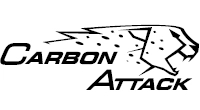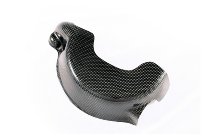CarbonAttack

Highest quality.
Precise fit.
Perfect appearance.
Every motorcyclist now knows the use of carbon / carbon fiber in motorcycle construction. Expensive motorcycles have entire frames made of carbon and other motorcycles are also using more and more small parts and covers made of carbon.
Most of the time it is not primarily about the big weight savings, but mainly about the cool, technical and high-quality look that the mats made of carbon fiber offer. A combination of perfect looks and superior quality - that's what today's motorcyclists value.
Under our house brand CarbonAttack we offer you selected, high-quality carbon articles from various manufacturers. The carbon products come both from well-known manufacturers / brands as well as from emerging, as yet unknown newcomers to the carbon scene. There are many small manufacturers who tinker for a long time to design exciting new products that offer customers "not just carbon", but something special.
Everything that meets our high quality standards and is innovative or unique deserves to be listed under the CarbonAttack brand.
The decision to include only the best carbon items and also to promote innovative and highly motivated startups together makes the fine but important difference between good carbon and our CarbonAttack top products.

So why buy CarbonAttack?
CarbonAttack is not just another carbon item program. All of our CarbonAttack products are distinguished by exceptionally high quality and excellent fit.
Every step of carbon processing is done to perfection: From the beginning with the selection and cutting of the fabric - to the final work with the finished paint application.
Buying carbon is a matter of trust - and CarbonAttack you can trust!
What is carbon?
"Carbon" is the colloquial term for products made of carbon fiber reinforced plastic (CFRP). Low dead weight and yet break-resistant as well as equipped with an enormous tensile strength: This is what characterizes "carbon"!
Carbon-carbon fibers were first produced in the 19th century by coking artificial silk and used as incandescent lamp wire.
Much later, towards the end of the 1960s, carbon reinforcement fibers came onto the market in small quantities and at high prices. Initially, only rovings (continuous fiber strands) were available, which were used to save weight in the aerospace industry.
Since about 1975, carbon fibers have been manufactured on an industrial scale worldwide and processed into a wide variety of reinforcing materials in aerospace, military, and aircraft & automotive applications, among others.
Composite materials, such as carbon, result from the combination of different materials. Here, the positive properties of the individual components are to be utilized.
In the case of CFRP, the carbon fibers are bonded with plastics made from different resins. Depending on the different component requirements, different resins are used (epoxy resin, phenolic resin, ... ) Normally, transparent resins are used to allow a view of the carbon fabric structure.

CarbonAttack Highlights
Production and processing


When processed into laminates, carbon fibers are comparable to textile glass products. Layer by layer, the cut fabric is impregnated with epoxy resin, for example, to produce a laminate.
Unlike glass fabric, which becomes transparent when properly wetted, carbon fiber remains uniformly black. Air bubbles and unimpregnated areas are avoided by meticulous quality control and careful work with the laminating brush and roller.
The laminating resin is used at room temperature (20 °C) so that it is thin enough to wet the fibers completely. Good wetting, without air pockets, is crucial for the subsequent mechanical properties of the laminate.


Generally, such resin systems are thermosets, which contain many different chemical elements. Thermosets are plastics that cannot be deformed by heat after they have cured and can therefore withstand high mechanical loads.
The bonding of these individual materials prevents the fibers from shifting against each other when subjected to a mechanical load.
Since carbon fibers only exhibit high stability in the fiber direction, the fibers are usually woven crosswise during production. This complex joining pattern gives carbon articles their stiffness. Without, of course, losing their lightness, for which carbon fibers are famous. The cross weaving also creates the characteristic appearance of carbon articles.
CarbonAttack product lines


We generally distinguish between two product lines: Glossy Finish and Matte Finish. They have the same quality and differ in the gloss of the surface.
Glossy carbon matches any motorcycle and has the same look as motorcycle paint. The only difference is that you see the carbon fiber instead of the paint. Matte carbon, on the other hand, fits better with "bad bikes" that have a matte finish themselves. In addition, the matte finish is still a bit lighter than glossy finishes.












